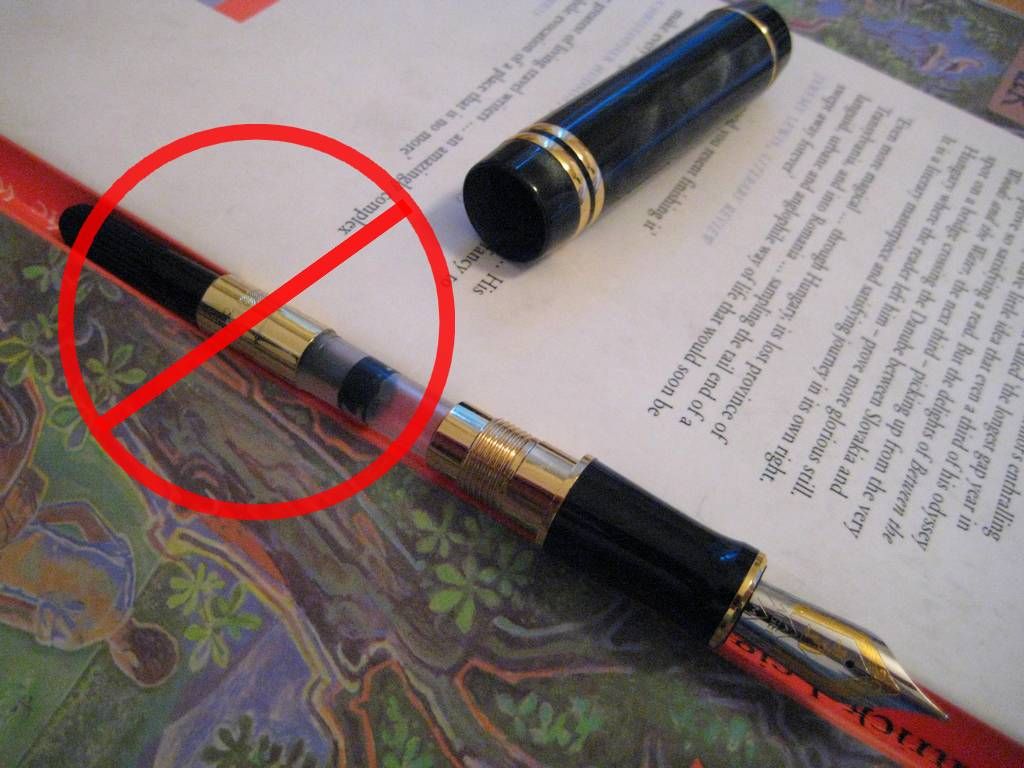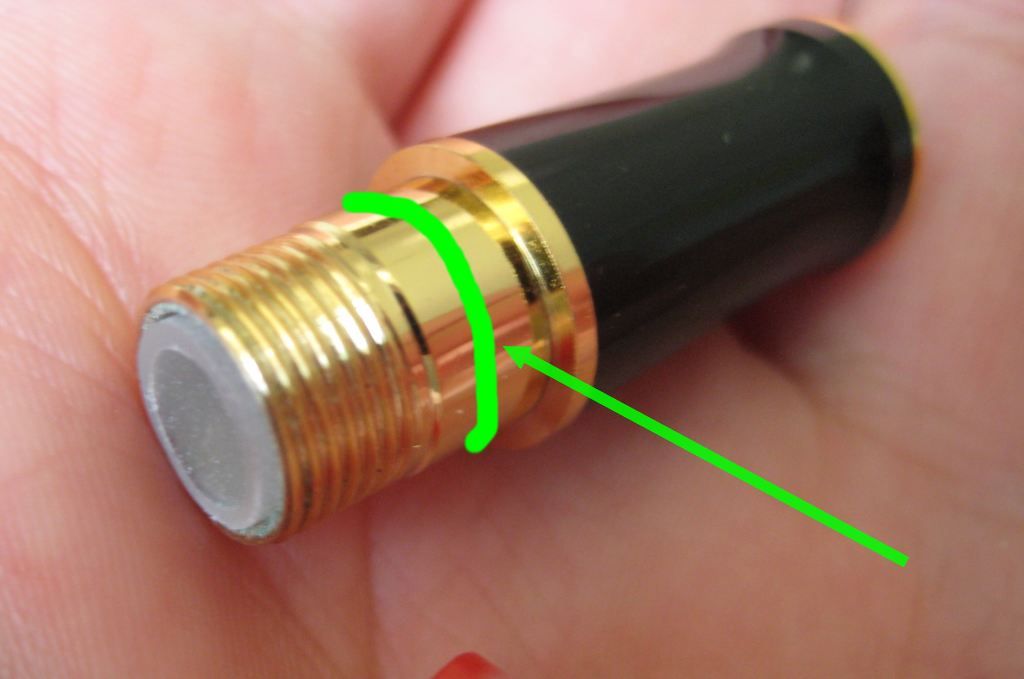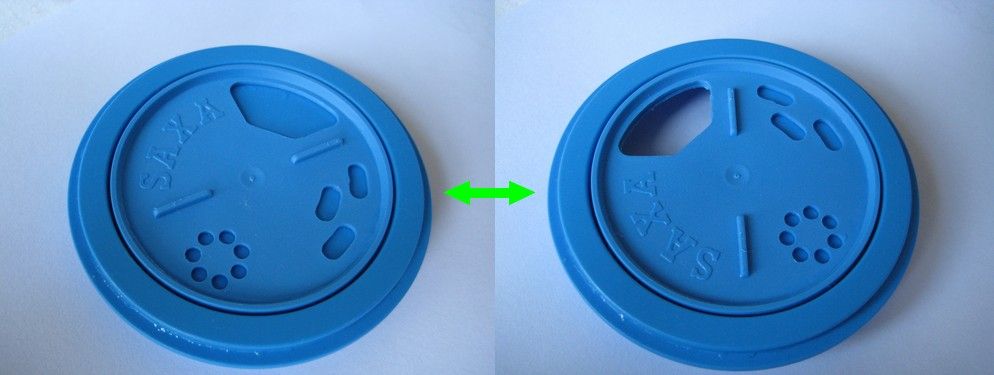It's satisfying to see things come together for the Kaigelu too; the exoticism of a plunger filler complements the fancy-pantalooned 316, the loose section sleeve problem is banished, and the poorly made factory piston converter languishes at the very bottom of my parts drawer. I also think it makes better sense for a big pen like the Kaigelu to be given a decent ink capacity - it always seems a bit odd to me when you open up a cavernous pen like this, to discover a diminutive converter with an ink volume roughly the size of the feed!
 |
| Vade retro, problematic twist converter! |
What You Get From This Mod
- A beautiful, fairly robust, and simple to maintain modern plunger filling fountain pen, with a single-stroke capacity of 1.5 ml - comparable to the TWSBI Vac700 - for £33.20 including pen, parts (including plenty of spares) and shipping.
- Some pricelessly enjoyable experience messing around with parts and tools.
- High stakes gambling fun via "Gouletian Roulette", the Goulet's stain risking, ink maximising fillling technique (this Kaigelu manages 2.2/2.3ml, tested with water rather than ink to spare my clothes).
What You Don't Get
- Firstly, transparency. The Kaigelu 316 comes in three finishes. This "charcoal" example (as if charcoal ever looked this good) is totally opaque, so you don't get to see the mechanism moving through the barrel, or the ink filling up, or sloshing about in reserve as you write. There's a sort of marble white finish that has some transparency, judging from photographs in Tiptricks review on FPN.
- Secondly - an ink shut off valve. While not strictly necessary - how many modern day eyedroppers do you see with them? - I would like to attempt shoehorning a ballpoint style twist on/off shut off valve into the blind cap at some stage. For another time, perhaps.
- Thirdly, a perfect testbed. The Kagelu has a decent amount of space to work with, but the high section thread placement and heavy finial do make life harder than it needs to be.
That's not to say the Kaigelu isn't a good pen - it is an outstanding pen. To my mind, its only major flaw is the poor design of the section sleeve, and the flimsy converter itself. Neither issue needs anything as involved as retrofitting a plunger filler to sort out - they can be sidestepped by installing a decently snug international cartridge, shellacing an ink sac over it, and leaving this in place as permanent arrangement.
Cha-Cha-Cha-Changes
In reflection, there's a fair few things I'd do differently with this first conversion under my belt, some to do with design, others execution.
The foremost, is that I would definitely go for a multi seal packing stack, this would hopefully trap grease where it is needed, and reduce the need for eventual regreasing of the plunger rod. Sacrificing some more of the finial's spigot would help create the space for this, further reducing the top end heft.
 |
| With a little more trimming, or a little less capacity, the 316 could be persuaded to accomodate a multi-seal packing stack. |
As the use of retaining circlips makes swapping out the packing stack quite fast, it would be easy to have a go experimenting with Sheaffer style felt packing, or the cork gaskets favoured by vintage Onotos. The techniques required while shaping cork certainly look diverting!
Secondly, to keep the section ink-tight, I've sealed it to the barrel with shellac. Nothing wrong with that - especially if ink based corrosion of the metal section were an issue - but the placement of the section threads offers another opportunity. They don't begin until some length off the shaft, so it could be possible to make use of the blank space by hollowing out a shallow channel in the metal, and installing a rubber seal for ease of overall disassembly. I'm less bothered about trying this out on the plunger filler, but the possibility is there. On reflection, this would probably be quite useful in an ink shut-off enabled Kaigelu eyedropper...
 |
| Arrowed - potential section gasket area. |
On the manufacturing side, lubricating the sliding seal with soap, rather than silicon grease, would have been more sensible when testing for fit, to prevent any grease getting on threads that would be shellacked on final assembly. Speaking of that sliding seal, something I didn't consider, for some reason, was the possibility of using an Imperial, rather than metric, sized O ring. An Imperial size might have been a better fit in the barrel from the get-go, needing less grinding down to size.
Cutting the packing unit circlip grooves I now know to be best done by hand, it doesn't take too long and gives you more control over the grinding head!
Finding a new method for grinding out the vacuum release chamber is also something I would have a good think about if I attempted this again. Before clumsily enlarging it, maximum ink capacity was tested at 2.8ml, which is very close to the volume of the barrel! Recently, I have been scribbling out some doodles, trying to think up a way to avoid grinding a release chamber at all. If the sliding seal could be made and broken on command via the blindcap, might the need for a vacuum release chamber be bypassed? Sort of a salt shaker top scenario at the bottom of the plunger rod. Come to think of it, there's your shut off valve too.
 |
| Please don't laugh, this makes sense in my head. |
Vacumatic versus Vacuum Plunger filling
In isolation, I think I prefer the single stroke vacuum plunger filling system over the multistroke vacumatic - both the build and in operation! I would like to see it married to a collector though. Maybe after living with the plunger filler a while, I'll write a comparison-style post.
Next up: Thanks, No Thanks!
References that helped, and villains that hindered this project are presented for praise and pillory in the next post.
Yes! Comparison post! Good idea! ;)
ReplyDelete"A beautiful, fairly robust, and simple to maintain modern plunger filling fountain pen, with a single-stroke capacity of 1.5 ml - comparable to the TWSBI Vac700 - for £33.20 including pen, parts (including plenty of spares) and shipping."
ReplyDeleteDon't forget the (I must assume) THOUSANDS of person-hours worth of labour and planning, as well as the emotional costs during the times when it resisted your efforts. That's a magnificent accomplishment, and worth any three Mont Blancs!
Hmmm, I seem to have run afoul of Blogger's threaded reply bugs... One more try:
ReplyDeleteYou are most likely correct about the hours of labour and planning, but I can't lay claim to the majority!
A hundred years of design evolution were a mouse click away; the generic plunger filler design, Francis Goossens' shifting o-ring design, and even a capacity boosting fill technique were laid before me like a three course meal.
This is a marvelous post and project, and I can't remember reading any thing like with such clear and enjoyable prose. Could you expand a bit your comments in this section?
ReplyDeleteTo my mind, its only major flaw is the poor design of the section sleeve, and the flimsy converter itself. Neither issue needs anything as involved as retrofitting a plunger filler to sort out - they can be sidestepped by installing a decently snug international cartridge, shellacing an ink sac over it, and leaving this in place as permanent arrangement.
Thanks, Travis
Hi Travis, thanks for being so complementary!
DeleteThe section sleeve issue is an example of the great variability in quality indicative of Chinese pens at this price point. The only thing holding the nib and feed in the pen is a plastic sleeve, which itself relies on glue to keep it in the pen.
This is all well and good if strong glue is used, and lots of it (as an example, my other K316 is fine). If it isn't, pushing a an ink cartridge into the pen is enough to push out the nib etc!
Really, the section itself should have a ledge inside it, acting as a physical stop for the cartridge. The Lamy Safari has such a ledge for example. Inexpensive Chinese clones of the Safari do not, and rely on glue.
Thanks for commenting - I'm happy to help if you have more questions.